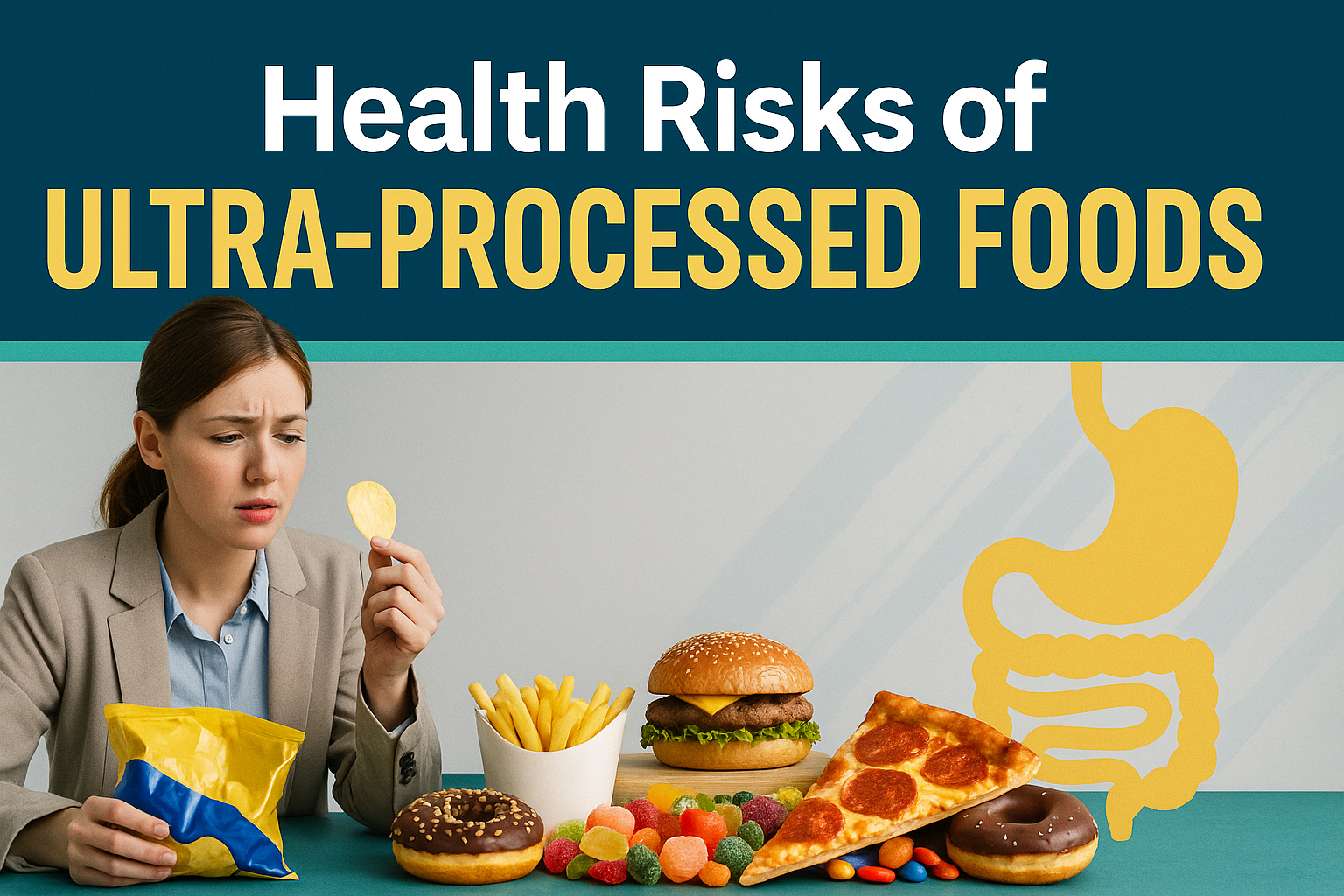Americans’ Diet: A Deep Dive into Ultra-Processed Foods
Intermediate | July 9, 2025
✨ Read the article aloud on your own or repeat each paragraph after your tutor.
The Ubiquity of Ultra-Processed Foods
Americans’ Growing Reliance on UPFs
Recent studies paint a clear picture: Americans are consuming alarming amounts of ultra-processed foods, often called UPFs. New analyses show that more than half of the calories eaten at home by U.S. adults come from these highly modified products, a trend that has been increasing over the years. Some estimates even suggest that UPFs make up as much as 70% of the overall American diet. This is a significant shift in how people eat, driven by convenience and availability. This article explores the health risks of ultra-processed foods and how they affect the American population.
What Are Ultra-Processed Foods?
Ultra-processed foods are products that have undergone extensive industrial processing and typically contain many added substances like artificial colors, flavors, emulsifiers, and sweeteners, with little nutritional value. Think of common items like packaged snacks, sugary cereals, instant noodles, and many ready-to-eat meals.
Why They Dominate Grocery Shelves
These items are incredibly pervasive, making up nearly half of all packaged food purchases in grocery stores. For food manufacturers, these products often offer longer shelf lives and lower production costs, a real “win-win” from a business perspective.
The Health Consequences and Calls for Change
Rising Health Risks Linked to UPFs
However, this widespread consumption of UPFs comes with serious health implications. Consistent evidence links diets high in ultra-processed foods to a range of damaging health outcomes. These include a higher risk of chronic conditions such as obesity, type 2 diabetes, and various forms of cancer. More specifically, studies have found a significantly increased risk of cardiovascular disease (up to 17% higher), coronary heart disease (23% higher), and stroke (9% higher) for those with the highest UPF intake compared to those with the lowest. These findings underline the broader issue of health risks of ultra-processed foods.
Why Ultra-Processed Foods Harm Your Health
Why are these foods so harmful? They are often high in added sugar, unhealthy fats, and sodium, but low in essential vitamins and fiber. Research also suggests that simply eating UPFs can lead people to consume more calories; one study found participants ate about 500 more calories per day when on an ultra-processed diet compared to a minimally processed one, even if both diets had similar calorie counts.
A Deeper Social Divide
It’s also worth noting that disparities exist, with lower-income households and those with less education often purchasing a higher proportion of these foods, highlighting a broader societal issue at play.
What Experts Are Recommending
Given these findings, there’s a growing call for action. Health experts and scientists are urging for measures to limit UPF consumption, including potential regulations like clearer warnings on packaging and advertising bans, similar to those for tobacco. The message is clear: understanding what we eat is the first step toward a healthier future.
Vocabulary
- Ultra-processed foods (UPFs) (noun phrase): Foods that have undergone significant industrial processing and often contain many added ingredients like artificial colors, flavors, and preservatives.
- Example: “Many common snacks, like chips and cookies, are considered ultra-processed foods.”
- Ubiquity (noun): The state of being everywhere or seeming to be everywhere at the same time.
- Example: “The ubiquity of smartphones means almost everyone has one.”
- Chronic (adjective): (Of an illness or problem) persisting for a long time or constantly recurring.
- Example: “Diabetes is a chronic condition that requires ongoing management.”
- Disparities (noun): Great differences.
- Example: “There are significant income disparities between different neighborhoods in the city.”
- Implications (noun): The conclusion that can be drawn from something although it is not explicitly stated.
- Example: “The new policy has serious implications for the national economy.”
- Nutritional value (noun phrase): The quantity of energy and nutrients in a food.
- Example: “Whole grains offer high nutritional value compared to refined grains.”
- Pervasive (adjective): (Especially of an unwelcome influence or physical effect) spreading widely throughout an area or a group of people.
- Example: “The pervasive use of social media has changed how we communicate.”
- Additives (noun): Substances added to food to preserve flavor or enhance taste, appearance, or other qualities.
- Example: “Some food companies use many artificial additives in their products.”
- Consumption (noun): The action of consuming something.
- Example: “Water consumption increases during hot summer months.”
- Regulation (noun): A rule or directive made and maintained by an authority.
- Example: “New safety regulations were introduced after the accident.”
Discussion Questions (About the Article)
- According to recent studies, what percentage of daily calories for Americans comes from ultra-processed foods?
- What are some examples of ultra-processed foods mentioned in the article?
- What health risks are strongly linked to consuming high amounts of ultra-processed foods?
- How do consumption patterns of ultra-processed foods differ among different socioeconomic groups in the U.S.?
- What are some of the calls to action mentioned to address the issue of ultra-processed food consumption?
Discussion Questions (About the Topic)
- What are some challenges people face when trying to reduce their intake of ultra-processed foods?
- How do you think food companies could be encouraged to produce healthier options?
- Do you think governments should implement stricter regulations on ultra-processed foods, similar to those for tobacco? Why or why not?
- How might the prevalence of ultra-processed foods in the U.S. compare to other countries you know about?
- What personal steps can individuals take to make healthier food choices in a world where ultra-processed foods are so common?
Related Idiom
“A double-edged sword”
- Meaning: Something that has both advantages and disadvantages.
- Example: “The convenience of ultra-processed foods can be a “double-edged sword” for health.”
📢 Want more practical tips to improve your English while learning about today’s important topics? Sign up for the All About English Mastery Newsletter!
Join the English Mastery Club — your place to practice, grow, and connect with others mastering English just like you!
Follow our YouTube Channel @All_About_English for more great insights and tips.
This article was inspired by: CBS News, July 2, 2025


